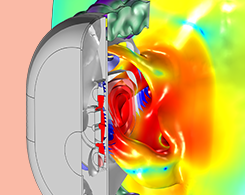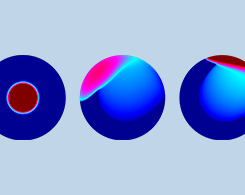All posts by Thomas Forrister

Analyzing the Sound Pressure Level of Headphones on Ears
Designing headphones presents a unique challenge: Unlike with loudspeakers, you can’t measure the sensitivity using a free-field setup due to the speaker’s closeness to the ear.

Optimizing Microwave Ovens with Solid-State RF Cooking
Did you know that conventional microwave ovens use the same magnetron technology that was first used in WWII? These researchers thought it was time for an upgrade…

Finding the Best Way to Make Crêpes with Fluid Dynamics Research
The recipe for the perfect crêpe calls for flour, eggs, milk, sugar, butter, and…simulation? Fluid dynamicists used simulation to solve the optimal coverage problem for crêpe making.

Analyzing the Liquid Cooling of a Li-Ion Battery Pack
A sudden temperature increase or decrease can affect the efficiency of a lithium-ion battery. For the battery packs used in electric vehicles and other application areas, this can be a problem…

Happy Birthday, Sir William Ramsay
Argon got its name, which means “lazy”, because it doesn’t react with other elements in air — or seem to do much of anything. The chemist behind this discovery went on to find the noble gases.

Happy Birthday, James Joseph Sylvester
Ever heard the word combiants? What about plagiograph, allotrius, or zetaic? The Shakespeare of mathematics, James Joseph Sylvester used his love of poetry to find new ways to describe theories.

Defeating Giant Movie Monsters Using Mathematical Modeling
The predator-prey equation can predict how we’d fare in a monster invasion, as well as real-world biology and ecology scenarios like shark overpopulation and tumor movement.

Optimizing Lubricated Systems with Numerical Simulation
Experts at SIMTEC designed a lubricated mechanical contact using numerical modeling and built an application for optimizing the use of lubrication in rolling and sliding bearings.
